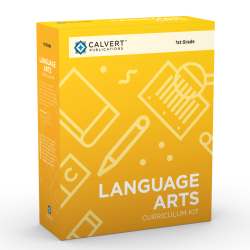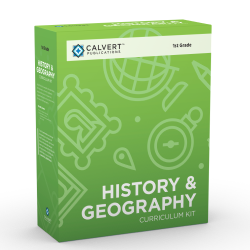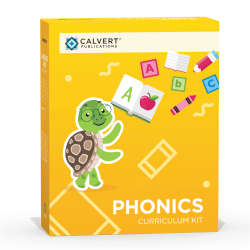Bottom Line Up Front: Yes
If you’re drowning in curriculum choices and wondering whether Calvert Homeschool is worth the investment, here’s the straight answer: Yes, it is, but only if you can afford it and value what it actually delivers.
Calvert isn’t cheap. It sits firmly in premium territory, costing significantly more than alternatives like Time4Learning or Khan Academy. But here’s what 110+ years (yeah, they’ve been around since 1905) in the homeschool business gets you: a curriculum that actually works, minimal parent prep time, and the flexibility to educate your kids without turning into a full-time teacher yourself.
The real question isn’t whether Calvert provides quality education. It does. The question is whether that quality, combined with the time you’ll save and the headaches you’ll avoid, justifies the price tag for your family’s situation and budget.
We’re going to dig into exactly what you get for your money, where Calvert shines brightest, and when you might want to look elsewhere. Because while Calvert is worth it for many families, it’s definitely not worth it for everyone.
Quick note: Calvert uses a secular approach and teaches evolution and old-earth science perspectives.
Calvert’s Key Strengths
Let’s start with what Calvert does exceptionally well. These aren’t just marketing promises. These are the real reasons thousands of families stick with Calvert year after year, despite the higher price tag.
Complete, Structured Program
Here’s the thing about most homeschool curriculum shopping: it’s exhausting. You’re comparing math programs, hunting for the perfect language arts curriculum, trying to figure out if your science choice will actually prepare your kid for high school, and somehow making sure it all fits together coherently. Then you discover your carefully chosen programs don’t align, your kid has gaps, and you’re back to square one.
Calvert takes a different approach. Instead of leaving you to piece together separate programs, they provide everything in one package: math, language arts, science, social studies, plus electives for older students. Does it eliminate every educational decision you’ll ever make? No. But it does mean you’re not spending Saturday afternoons comparing phonics programs or wondering if your science curriculum will actually prepare your kid for high school chemistry.
The curriculum follows a systematic scope and sequence (basically, what gets taught when and in what order) that spans from kindergarten through 12th grade. Each grade level includes 180 lessons per subject, carefully paced to cover material thoroughly without rushing or dragging. For elementary students, this means your kindergartner isn’t just learning to read. They’re following a specific phonics sequence that connects to spelling patterns they’ll encounter in second grade, which builds toward the grammar concepts they’ll need in fourth grade.
But this integration runs deeper than you might expect. Take their approach to teaching the Civil War. Instead of studying it only in history class, students encounter Civil War literature, examine the mathematical concepts behind supply logistics, and explore the scientific innovations of the era. And it actually works in practice.
The program structure varies by age but maintains consistency throughout. Younger students (K-2) work primarily with colorful print workbooks, hands-on manipulatives, and guided activities that require parent involvement. Middle elementary (3-5) transitions to more independent work with digital lessons supplemented by print materials. Secondary students (6-12) work almost entirely online with multimedia lessons, interactive assignments, and self-paced learning modules.
This structure helps reduce guesswork about academic progression. You’re not wondering if your third-grader is ready for multiplication or whether your seventh-grader has covered enough grammar to tackle complex writing assignments. Calvert’s placement tests ensure students start at appropriate levels, and the structured progression means each concept builds naturally on the last.
The program also accommodates different learning speeds without losing structure. Advanced students can work ahead in subjects where they excel, while others can take extra time to master challenging concepts. The system automatically adjusts pacing and provides additional practice when needed, all while maintaining the overall coherence of the educational plan.
Time-Saving Benefits
Let’s talk about your time, because that’s really what you’re buying when you choose Calvert. The difference between spending your Sunday evenings planning next week’s lessons versus having them already mapped out for you isn’t just convenience. It’s the difference between homeschooling being a part-time job and homeschooling being manageable.
With most curriculum approaches, you’re looking at significant prep time. You need to review lessons before teaching them, gather materials, plan activities, and figure out how to explain concepts you haven’t thought about since your own school days. Parents regularly report spending 2-4 hours of preparation for every hour of actual teaching time. That’s not sustainable for most families.
Calvert flips this equation. Your daily prep time typically drops to about 5-15 minutes of reviewing what your child accomplished and maybe previewing tomorrow’s work. The lessons come with clear instructions, built-in explanations, and step-by-step guidance. You’re not teaching algebra from scratch; you’re facilitating a lesson that’s already designed to teach algebra effectively.
Here’s where the opportunity cost calculation gets interesting. Let’s say you’re saving 10 hours per week on lesson planning and prep. Over a 36-week school year, that’s 360 hours. If your time is worth $20 per hour (whether that’s actual earning potential or just the value of having those hours back), you’ve just saved $7,200 worth of your time. Of course, you’re paying significantly more for this convenience, so whether the math works depends on your specific situation.
The built-in assessments and record-keeping add another layer of time savings. The system automatically tracks progress, grades objective questions, and generates reports for your records. You’ll still need to grade written work and essays, but the tedious tracking of which lessons were completed when? That’s handled automatically.
Even the customer support saves time in ways you might not expect. Instead of hunting through homeschool forums trying to figure out why your kid is struggling with fractions, you can call Calvert’s support line and get guidance from someone who knows exactly how their curriculum progresses and where common trouble spots occur.
Materials & Resources
When the Calvert materials arrive, the quality difference is noticeable. The materials feel substantial. We’re talking thick, full-color textbooks with quality paper and durable construction.
For younger students, the physical materials make a real difference. Kindergarten and first-grade packages include manipulatives, flashcards, readers, and hands-on learning tools that actually enhance the lessons rather than feeling like afterthoughts. The phonics cards are sturdy enough to survive daily use. The math manipulatives are the kind teachers use in traditional classrooms, not cheap plastic substitutes.
As students move into elementary and middle school, the balance shifts toward digital delivery, but the print materials that remain are still high quality. Textbooks include clear explanations, colorful illustrations, and enough detail that students can reference them independently. You won’t find yourself constantly supplementing with outside resources because the explanations are too brief or unclear.
The online platform handles the heavy lifting for digital content. It works on any device with internet access, which means your kids can do schoolwork on a laptop, tablet, or even a smartphone if necessary. No special software to install or compatibility issues to troubleshoot. The system saves progress automatically, so technical glitches don’t mean lost work.
The platform includes educational games that reinforce concepts, multimedia presentations, and simulations for science experiments. The gamification features, like earning badges for completed lessons, provide motivation for some students. That said, kids who crave constant variety or prefer hands-on learning might find the digital format somewhat repetitive over time.
One practical note: you’ll need basic household items for some science experiments and art projects. Nothing exotic, but be prepared to supply things like baking soda for volcano experiments or construction paper for geography projects. Most families find they already have 90% of what’s needed.
Financial Considerations
Let’s address the elephant in the room: Calvert costs significantly more than most homeschool options. There’s no way around this fact, and we’re not going to pretend otherwise. The question is whether the additional cost makes financial sense for your family’s specific situation.
Cost Breakdown
Calvert operates two distinct programs with very different price points. Understanding what you’re actually paying for helps avoid sticker shock and ensures you’re comparing apples to apples.
Calvert Academy functions as a full online school with certified teachers, official transcripts, and complete support services. Annual costs run $1,595 to $4,191 depending on grade level. Kindergarten starts at $1,595 for two core courses, while high school reaches $4,191 for six courses including electives. You can spread payments over nine months, and they offer a 10% discount if you pay annually upfront.
Calvert Homeschool provides curriculum packages without the school services, ranging from $320 to $1,575 annually. Individual courses cost $299 to $647, while complete grade-level packages run $975 to $2,155. They also offer monthly subscriptions at $39.95 per student for families who prefer smaller ongoing payments.
Additional costs creep in depending on your choices. Shipping ranges from $25 to $75 for physical materials. If you want advisory teaching services (essentially tutoring support), add another $580 to $649 per year. Course extensions for students who need extra time cost $49 to $99 each.
Science courses require basic household supplies we mentioned earlier. Most families spend an additional $50 to $100 per year on items like batteries, magnifying glasses, or simple chemistry supplies. Advanced high school courses might need specialized materials, but Calvert provides detailed lists so you can budget accordingly.
Cost-Effectiveness Analysis
Here’s where the math gets interesting, and where many families either justify the expense or decide it’s not worth it.
Here’s how Calvert stacks up against the competition: Time4Learning runs $359 to $479 annually. Khan Academy is free. K12’s public school option costs nothing out of pocket. Even premium competitors like Abeka or BJU Press typically run $500 to $800 per year. Calvert represents a 300% to 500% premium over these options.
But straight curriculum cost comparison misses half the equation. Remember those hours you save on lesson planning? If your time has any economic value, whether from work you could be doing or activities you’d prefer, that savings needs to factor into the calculation.
Take a minute to figure out what your time’s actually worth to your family. If those saved planning hours have value, the premium pricing might make more sense than it appears at first glance.
The cost effectiveness also improves with multiple children. Calvert allows siblings to use the same materials with some restrictions. You can’t run two kids through the online program simultaneously, but you can reuse textbooks and manipulatives. Families with 2-3 children often find the per-child cost drops significantly.
Long-term considerations matter too. Calvert’s systematic approach often means fewer gaps that require expensive remediation later. Parents report their kids testing ahead of grade level and transitioning smoothly to traditional schools or college. Avoiding summer tutoring or remedial courses can save hundreds of dollars annually.
That said, cost effectiveness depends heavily on your family’s situation. If you enjoy curriculum planning, have abundant time, or genuinely can’t afford the premium, cheaper alternatives might serve you better. The key is calculating your actual costs, including time, rather than just comparing sticker prices.
Academic Quality & Approach
Cost and convenience matter, but they’re meaningless if the education itself falls short. This is where Calvert’s experience becomes relevant. The academic approach isn’t trendy or experimental. It’s based on methods that have consistently prepared students for college success.
Calvert uses what they call a “discovery learning” approach, which sounds fancy but boils down to helping students understand concepts rather than just memorize facts. Instead of drilling multiplication tables until kids can recite them robotically, students explore why multiplication works, how it connects to addition, and where they’ll actually use it in real life. They still learn their times tables, but they understand what they’re doing.
The curriculum maintains a traditional academic foundation while incorporating modern teaching methods. Grammar instruction follows a systematic progression from basic sentence structure through complex literary analysis. Math builds from concrete manipulatives in elementary grades through abstract algebraic thinking in high school. Science combines hands-on experiments with theoretical understanding, preparing students for AP courses and college-level work.
This approach particularly shines in writing instruction. Instead of assigning random essays, students write about topics connected to their other subjects. When studying ancient Rome in history, they might write persuasive essays about Roman political systems or creative pieces set in that time period. The writing skills develop naturally within meaningful contexts rather than artificial exercises.
College prep isn’t just a high school thing with Calvert. It starts early. Elementary students learn research skills and proper citation methods. Middle schoolers tackle increasingly complex reading and develop critical thinking abilities. By high school, students can handle AP courses, dual credit programs through Jacksonville University, and honors-level work that genuinely prepares them for college rigor.
The accreditation also matters when it comes to college admissions. Calvert Academy maintains accreditation through NCA CASI and SACS CASI via Cognia, the same organizations that accredit many traditional schools. Transcripts carry weight with admissions officers, and coursework meets NCAA requirements for student athletes.
Standardized testing compatibility ensures students can demonstrate their knowledge through conventional measures. The curriculum aligns with state standards and covers content typically tested on SATs, ACTs, and state assessments. Parents often report their children scoring above average on standardized tests, though Calvert doesn’t publish official test score data.
Here’s something that really stands out about Calvert: the consistency across grade levels. Students typically experience smoother transitions between elementary and middle school or middle school and high school. The progression feels natural because it is natural, with each year building systematically on previous learning.
The program also accommodates advanced learners without leaving average students behind. Gifted students can accelerate through material or take courses above grade level. Students who need more time receive additional practice and support. Both groups follow the same rigorous academic framework, just at different paces.
Practical Shopping Advice
If you’re leaning toward Calvert but want to make sure it’s the right choice, here’s how to evaluate fit without buyer’s remorse.
Start with sample lessons. Calvert provides free samples for most grade levels. For print materials (K-5), you can download sample pages directly from their individual product pages. Have your kids try a few lessons in different subjects. Pay attention to their engagement level and your comfort with the teaching approach. If the samples feel like a good fit, the full program probably will too.
Calculate your real costs, including opportunity cost. Write down what you currently spend on curriculum, add your estimated time investment multiplied by what your time is worth, then compare that total to Calvert’s pricing. The numbers might surprise you.
Consider your long-term plans. If you’re planning to homeschool through high school, Calvert’s systematic progression becomes more valuable. If you’re only homeschooling for a few years, the premium might be harder to justify.
Evaluate your support needs honestly. Parents who thrive with minimal guidance can succeed with cheaper options. Parents who want clear instructions, planned lessons, and customer support will find Calvert’s structure valuable.
Think about your children’s learning styles and personalities. Self-motivated kids who like clear expectations often do well with Calvert. Children who need constant variety or struggle with screen time might need different approaches.
Test the customer service before you buy. Call with questions about placement, course content, or technical requirements. Their responsiveness and helpfulness will give you a preview of what support looks like as a customer.
Maximize your investment by using all available resources. Take advantage of placement tests to ensure appropriate levels. Use the customer support for questions. Follow the scope and sequence rather than jumping around. And definitely reuse materials with younger siblings when possible.
When Calvert Might NOT Be the Best Fit
Let’s be honest about when Calvert isn’t worth the money, because spending $1,500+ on curriculum that doesn’t match your family’s needs is worse than spending $300 on something that works perfectly for you.
Budget-conscious families with time to spare should probably look elsewhere. If money is genuinely tight and you have the time and inclination to research, plan, and piece together your own curriculum, you can absolutely provide an excellent education for much less. Calvert’s convenience comes at a premium, and if you don’t need that convenience, you’re paying for something you won’t use.
Hands-on learning enthusiasts might find Calvert too structured and text-heavy. Families who love unit studies, Charlotte Mason approaches, or project-based learning often feel constrained by Calvert’s systematic progression. If your kids learn best through nature walks, cooking experiments, and creative exploration, Calvert’s traditional academic approach might feel dry and limiting.
Parents who enjoy curriculum development sometimes get bored with Calvert’s completeness. If you love researching educational approaches, creating themed units, and adapting lessons to your children’s interests, Calvert doesn’t leave much room for that creativity. You might find yourself feeling like you’re just facilitating someone else’s educational vision rather than crafting your own.
Children with significant learning differences may need more customization than Calvert provides. While the program allows some pacing flexibility, it doesn’t offer extensive modifications for dyslexia, ADHD, autism, or other learning challenges. Families dealing with these issues often need specialized curricula or the ability to heavily modify standard approaches.
Unschooling families will find Calvert completely incompatible with their philosophy. If you believe in child-led learning and educational freedom, Calvert’s structured approach will feel restrictive and counterproductive. The two philosophies simply don’t mesh.
Conclusion
So, is Calvert Homeschool worth it? For the right families, absolutely yes.
If you value your time, want a comprehensive curriculum that actually works together, and can afford the premium pricing, Calvert generally delivers on its promises. You’re buying educational expertise, quality materials that last, and the peace of mind that comes from knowing your kids are getting a solid academic foundation. The time you’ll save on planning and preparation alone justifies the cost for many busy families.
Calvert makes the most sense for families who want structure without rigidity, quality without complexity, and comprehensive education without the endless research and piecing together of separate programs. It’s particularly valuable for working parents, military families who move frequently, or anyone who wants to homeschool effectively without becoming a full-time curriculum developer.
The program isn’t perfect for everyone. If you’re on a tight budget, love creating your own lessons, or have kids with significant special needs, you might find better options elsewhere. But for mainstream homeschooling families who want proven results with minimal hassle, Calvert consistently delivers.
The bottom line remains what we said at the beginning: Calvert costs more because it provides more. Whether that extra value matters to your family depends on your specific situation, budget, and priorities. But after looking at what you actually get for your money, including the time savings and reduced stress, the premium pricing starts making a lot more sense.
If you’re considering Calvert, talk to their customer service team about your specific needs. The investment is significant enough that you want to be confident it’s the right fit before you commit. But for families where it does fit, Calvert often becomes a long-term solution that grows with your children and simplifies your homeschool journey considerably.






